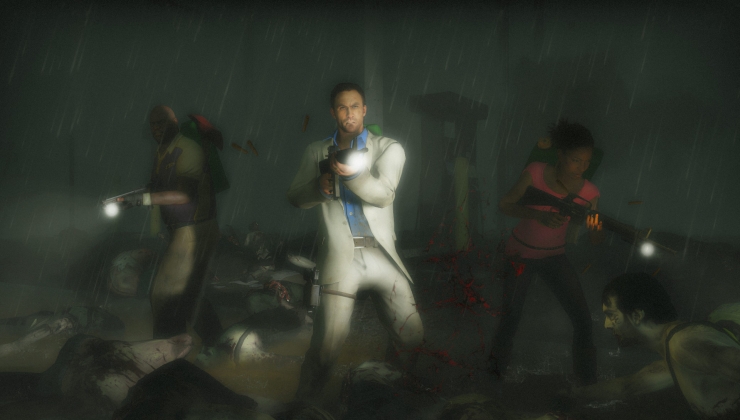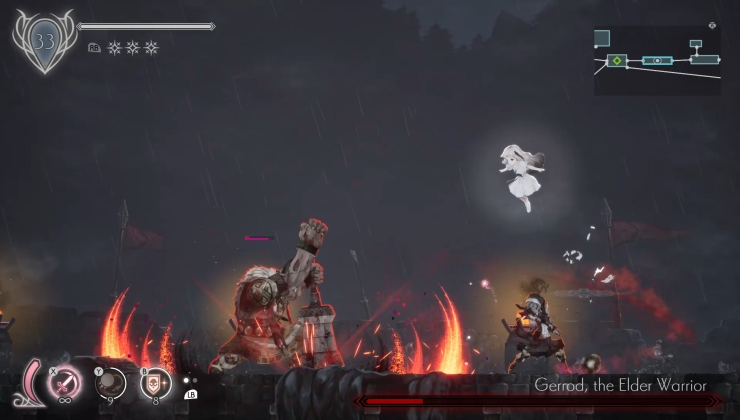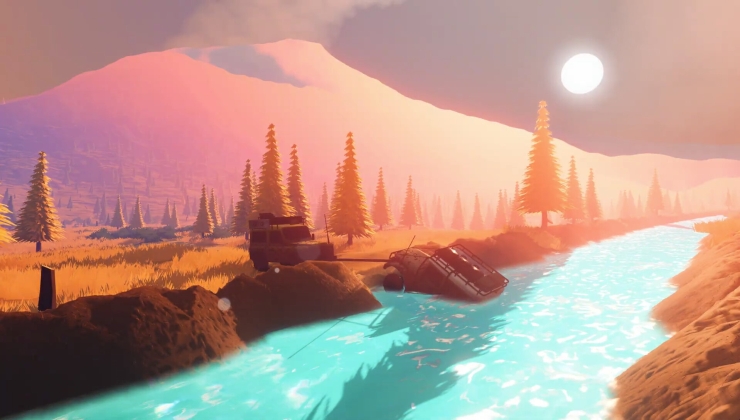After around 25 months of development, Debian has now released the next stable version Debian 10 "Buster" which will be supported for five years. In this release GNOME now defaults to using Wayland instead of Xorg, the AppArmor kernel security module is enabled by default and it's powered by the Linux 4.19 kernel.
For those who don't like to live on the edge, Debian is a good choice for having a solid computing experience with Linux. Debian 10 comes with these available desktops:
- Cinnamon 3.8
- GNOME 3.30
- KDE Plasma 5.14
- LXDE 0.99.2
- LXQt 0.14
- MATE 1.20
- Xfce 4.12
Like other distributions, you don't need to install Debian right away. It has a "live" image you can stick on a USB, to test it without making any changes on your computer.
For those unaware, Debian is what both Ubuntu (so also Mint, elementary OS, KDE neon and many more) and SteamOS base themselves upon, so the work that goes into Debian affects a great many other distributions.
If you're not upgrading right away, rest assured that Debian 9 "Stretch" is still supported and will continue to be for 12 months with the Debian Security Team, after which it will be handed over to the Debian LTS team.
See their official news post here.
The new Steam officially supported distro just launched.
Awesome.
(Just a speculation, for now...)
Nah, I don't think so.
There's a lot things to do after the installation. IMO they will support a more friendly distro, preferably with a corporation behind, like OpenSUSE or Fedora
Maybe they create a new distro for desktop use based on Debian.
I don't see where people get the impression that Ubuntu is more 'user friendly'. Nothing says that better than their python based installer that regularly crashes at the partitioning step with a bunch of exceptions that are surely easier to read for the average user than plain language.
Because the average used does not use whatever advanced setting that you are using that are causing those crashes. They will simply click "next" all the way. And once they have done so they will have a fully working desktop, and if they need further customization or changes then the Internet is full of blogs and nice looking guides for how to do this in Ubuntu.
That is why.
It is reasonable to expect that people with laptops that do anything but video games (like banking or job emails) on their computers want some kind of FDE (fake or not) on their hard drives. This is something that the ubuntu installer regurarly crashed on for me every time i tried to install it on my laptop.
The new Steam officially supported distro just launched.Lately I tried to switch from LM to LMDE and I switched back the next day, because pretty much nothing worked.
Awesome.
(Just a speculation, for now...)
It was a pain in the ass to even launch Steam and none of the games worked.
Also, the latest Nvidia drivers are not available for Debian.
If you look at protondb reports, you will see that most of "platinum" and "gold" reports come from either Ubuntu, LM or Manjaro.
So I don't think that Valve will give up on Ubuntu that easily.
Especially with Canonical backtracking on their statements.
The Nvidia driver that is in the non-free repos is two months old. If that's not good enough, i don't know what is. Your troubles with steam may have to do with you doing a "tricky" install and/or using nvidia - they are not the most linux-friendly company around. (Also, before crying wolf you should also check steam on something like gnome ore kde, on which it is probably tested, i don't think they test it on blackbox and the likes. They usually omit many dependencies that steam needs too)
Lately I tried to switch from LM to LMDE and I switched back the next day, because pretty much nothing worked.
It was a pain in the ass to even launch Steam and none of the games worked.
I can't comment about LMDE, but installing and running steam and Nvidia drivers on Debian is some simple commands:
https://ein-eike.de/2016/08/28/how-to-install-steam-and-nvidia-drivers-on-debian-jessie/
Also, the latest Nvidia drivers are not available for Debian.
AFAICS, the [latest drivers from Nvidia](https://www.nvidia.de/object/unix-de.html) are 430.26, while the [latest Nvidia drivers packaged by Debian](https://packages.debian.org/de/experimental/nvidia-driver) are 430.26. (Don't let yourself fool by the word "experimental". That's not more experimental than Arch, some PPA or whatever.)
The Nvidia driver that is in the non-free repos is two months old. If that's not good enough, i don't know what is. Your troubles with steam may have to do with you doing a "tricky" install and/or using nvidia - they are not the most linux-friendly company around. (Also, before crying wolf you should also check steam on something like gnome ore kde, on which it is probably tested, i don't think they test it on blackbox and the likes. They usually omit many dependencies that steam needs too)The latest drivers I found for Debian is [390.48](https://wiki.debian.org/NvidiaGraphicsDrivers#Debian_9_.22Stretch.22). Also, they are way harder to install than on LM. On LM I just add PPA and install them via driver manager, but on Debian I have to install everything manually and often it goes wrong.
After installing drivers I had a problem with Steam not launching because of some missing libraries (seems to be driver-related) and of course I had to manually install those too.
Then, after Steam finally launched I tried to start some games via Steam Play and they all didn't start for different reasons. I kinda gave up on that step because everything Wine-related is too complicated for me.
So, what I'm trying to say, there is probably a lot of work for Valve if they want support Debian as a main platform without giving users "DIY" headache.
I've been hearing conflicting information about Mint's plans regarding LMDE. Anyone know if they intend to continue giving it releases (perhaps with renewed interest from Canonical's recent blunder)?
Linux Mint Cinnamon, Xfce, MATE and LMDE are all continuing. And Clem has reconfirmed multiple times that 32bit libraries will be sticking around as well. For now they're mostly holding steady and watching what Ubuntu does, but if Ubuntu ever breaks compatibility with Wine/Steam in the future, they'll work around that so it doesn't affect Linux Mint. At least that's the jist of what Clem has said on the matter.
The latest drivers I found for Debian is [390.48](https://wiki.debian.org/NvidiaGraphicsDrivers#Debian_9_.22Stretch.22).
This is the best place to look:
https://packages.debian.org/de/experimental/nvidia-driver
You can click through the releases on the upper right, but if you want the latest, "experimental" is fine.
Also, they are way harder to install than on LM. On LM I just add PPA and install them via driver manager, but on Debian I have to install everything manually and often it goes wrong.
In Debian, you're also adding the repository to the sources (once in a lifetime), and then you're doing
sudo apt-get -t experimental[or whatever Debian suite you want to use at the moment] install nvidia-driver
That's it.
After installing drivers I had a problem with Steam not launching because of some missing libraries (seems to be driver-related) and of course I had to manually install those too.
When you have it setup once correctly, the above command and a reboot is all you need.
Last edited by Eike on 8 Jul 2019 at 12:24 pm UTC
I can't comment about LMDE, but installing and running steam and Nvidia drivers on Debian is some simple commands:I see. Guess I will try it again later. Thank you.
https://ein-eike.de/2016/08/28/how-to-install-steam-and-nvidia-drivers-on-debian-jessie/
AFAICS, the [latest drivers from Nvidia](https://www.nvidia.de/object/unix-de.html) are 430.26, while the [latest Nvidia drivers packaged by Debian](https://packages.debian.org/de/experimental/nvidia-driver) are 430.26. (Don't let yourself fool by the word "experimental". That's not more experimental than Arch, some PPA or whatever.)
Last edited by MadVillain on 8 Jul 2019 at 8:19 am UTC
I see. Guess I will try it later again. Thank you.
I don't want to persuade anybody to use Debian.
But I feel it is less hard and less outdated than people think.
For those who don't care about the latest software, but might need a current graphics driver or kernel, there will be a buster-backports repository (like an official PPA, if you will).
Problem: I always quit the debian install for another distro 'cause those kernels coming from ages! How to get bugs and materials working with such delay on kernel! I'm pretty sure solutions exist to get those materials working (last example: a small Pc based on intel https://ark.intel.com/content/www/us/en/ark/products/128990/intel-pentium-silver-n5000-processor-4m-cache-up-to-2-70-ghz.html -> no way to make it working -network and intel gpu-)
Solution? My two cents: I would love debian to launch two different distros: one with current-recent-running kernels and updates (at our own risks, I have the chance to store all my important data on a NAS, so I would take it) and the stable one.
problem2: As says F.Ultra, getting help on a debian install on the internet with few skills on this distro is like trying to have help with no money in another-speaking (and non-spoke) unfriendly country: no avaialble document readable directly, and when asking, either no answer or someone barking at you that you should have bought another materials
Problem: I always quit the debian install for another distro 'cause those kernels coming from ages! How to get bugs and materials working with such delay on kernel! I'm pretty sure solutions exist to get those materials working (last example: a small Pc based on intel https://ark.intel.com/content/www/us/en/ark/products/128990/intel-pentium-silver-n5000-processor-4m-cache-up-to-2-70-ghz.html -> no way to make it working -network and intel gpu-)
I'm not sure if I understand the problem. Is the installer failing due to not supporting the hardware because it's too old? Or does installing work and you would like newer drivers in the running system?
If you've got hardware needing non-FLOSS drivers, there's a "non-free" installer for that.
I'm not sure if I understand the problem. Is the installer failing due to not supporting the hardware because it's too old? Or does installing work and you would like newer drivers in the running system?no, I think that the kernel doesn't support this new (well..hummm not so but seems anyway) material, according to the returns from some forum replies I had.
If you've got hardware needing non-FLOSS drivers, there's a "non-free" installer for that.
They advised me to try newer kernel and install them by myself, but I failed (well it worked, but many other programs were down after)
Last edited by Geppeto35 on 8 Jul 2019 at 10:05 am UTC
no, I think that the kernel doesn't support this new (well..hummm not so but seems anyway) material, according to the returns from some forum replies I had.
They advised me to try newer kernel and install them by myself, but I failed (well it worked, but many other programs were down after)
I'm still unsure. :)
Do you get a running system?
(Then I might be able to help you.)
I'm still unsure. :)
Do you get a running system?
(Then I might be able to help you.)
Yes, it worked. I can see and use the desktop. But no lan/internet and ultra low resolution that I can't change. Anyway, ubuntu works on it by day-one, but I would have preferred to use debian 4 ethic and personal convictions ^^
Yes, it worked. I can see and use the desktop. But no lan/internet and ultra low resolution that I can't change. Anyway, ubuntu works on it by day-one, but I would have preferred to use debian 4 ethic and personal convictions ^^
It would be hard to fix without network. :)
Did you use a "non-free" installer? It should solve most hardware usage problems.
It would be hard to fix without network. :)I tried some stuffs with usb key. Didn't know that non-free installer exists! :D
Did you use a "non-free" installer? It should solve most hardware usage problems.
The Nvidia driver that is in the non-free repos is two months old.418.74 in stable, and 430.26 in experimental.
I do have unstable in general, with experimental pinned to a low value, default would be 500. Here's part of my /etc/apt/preferences.d/pinning.pref
Package: *
Pin: release o=Debian,a=unstable
Pin-Priority: 700
Package: *
Pin: release o=Debian,a=experimental
Pin-Priority: 20
I tried some stuffs with usb key. Didn't know that non-free installer exists! :D
Debian took quite some effort to remove non-free stuff from their "main" distribution (and AFAIR also from the kernel - didn't find sources?). As they know that many people do need non-free drivers, it's in the "non-free" section. And as some drivers are needed for installation, there are "non-free" install mediums as well.
Agreed. Although I do have one minor peeve about that Ubuntu (and Mint) installer nonetheless. As a pretty basic user, I still tend to need to muck with the partitioning. Why? Because even the most basic user would be well advised to put their /home on a separate partition from the / with the actual OS. Eventually you're gonna update or reinstall or try a different distro or something, and when you do your life will be so much easier if your actual data you care about is on a separate partition from the one that's gonna get formatted. Sure, you should do a backup anyway, but having those two partitions is basic. But do they have that as an option, or even the default? They do not. If you want that you have to go into the full partitioning thingie and worry about swap and a little boot space and crap like that. Grumble mutter whine bitch.The new Steam officially supported distro just launched.
Awesome.
(Just a speculation, for now...)
Nah, I don't think so.
There's a lot things to do after the installation. IMO they will support a more friendly distro, preferably with a corporation behind, like OpenSUSE or Fedora
Maybe they create a new distro for desktop use based on Debian.
I don't see where people get the impression that Ubuntu is more 'user friendly'. Nothing says that better than their python based installer that regularly crashes at the partitioning step with a bunch of exceptions that are surely easier to read for the average user than plain language.
Because the average used does not use whatever advanced setting that you are using that are causing those crashes. They will simply click "next" all the way. And once they have done so they will have a fully working desktop, and if they need further customization or changes then the Internet is full of blogs and nice looking guides for how to do this in Ubuntu.
That is why.
(I swear I have a recollection of Mandriva having that option available in its installer in the old days)
What you cite is not an argument for partitioning, but rather for the use of LVM.
And frankly I don't know why anyone would partition any linux installation today (except for sharing a drive with Microsoft crapware, of course). It seems to me that this should have been abandoned in the nineties, when I fully switched to using LVM on every installation.
AFAIK you setup LVM in the Ubuntu Installer via the partition utility. At least you do in the advanced installer.
And if you do like to live on the edge, there is Debian Testing, which is a perpetually rolling release.And if you like to be over of the edge, there is always experimental ;)








 How to set, change and reset your SteamOS / Steam Deck desktop sudo password
How to set, change and reset your SteamOS / Steam Deck desktop sudo password How to set up Decky Loader on Steam Deck / SteamOS for easy plugins
How to set up Decky Loader on Steam Deck / SteamOS for easy plugins
See more from me